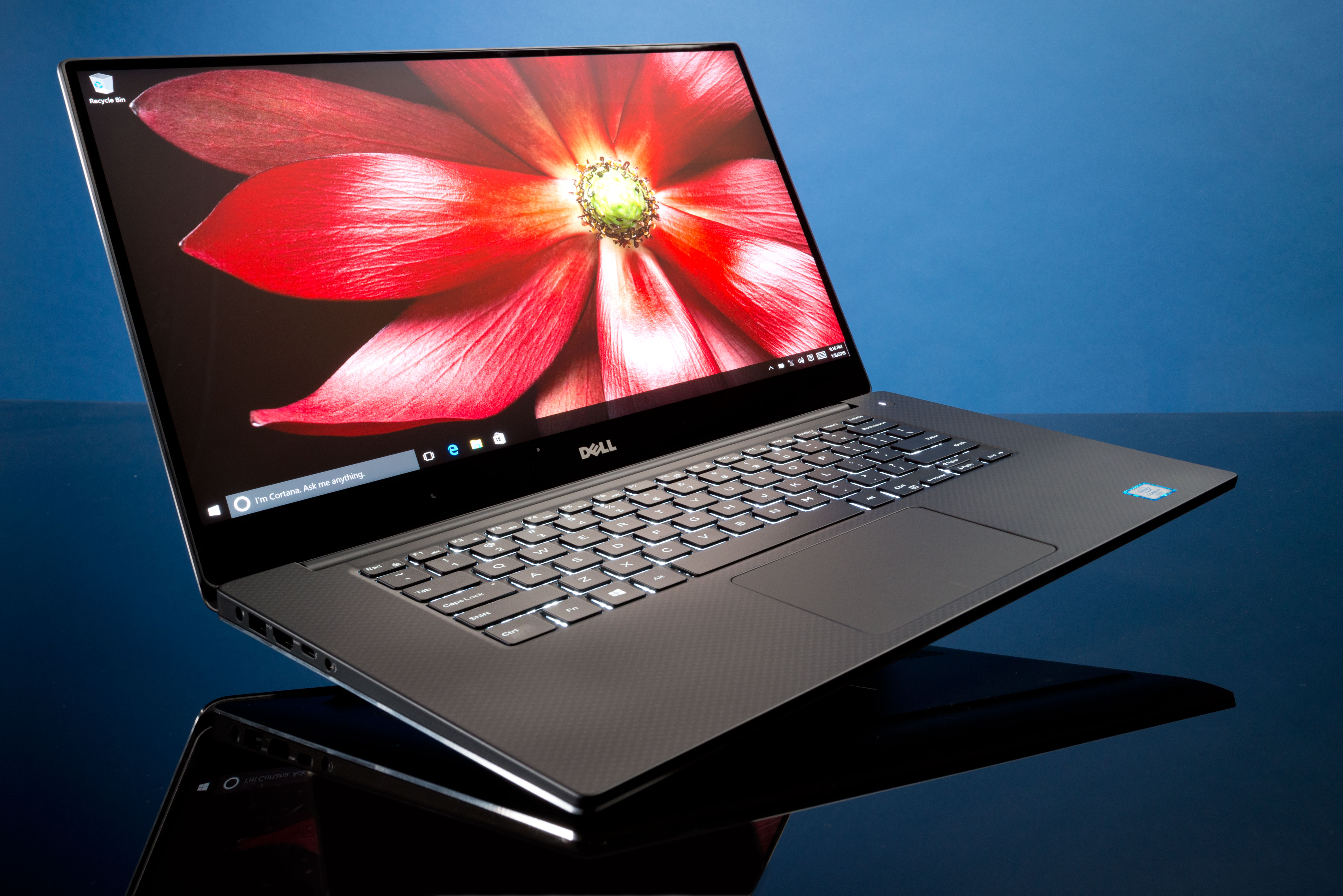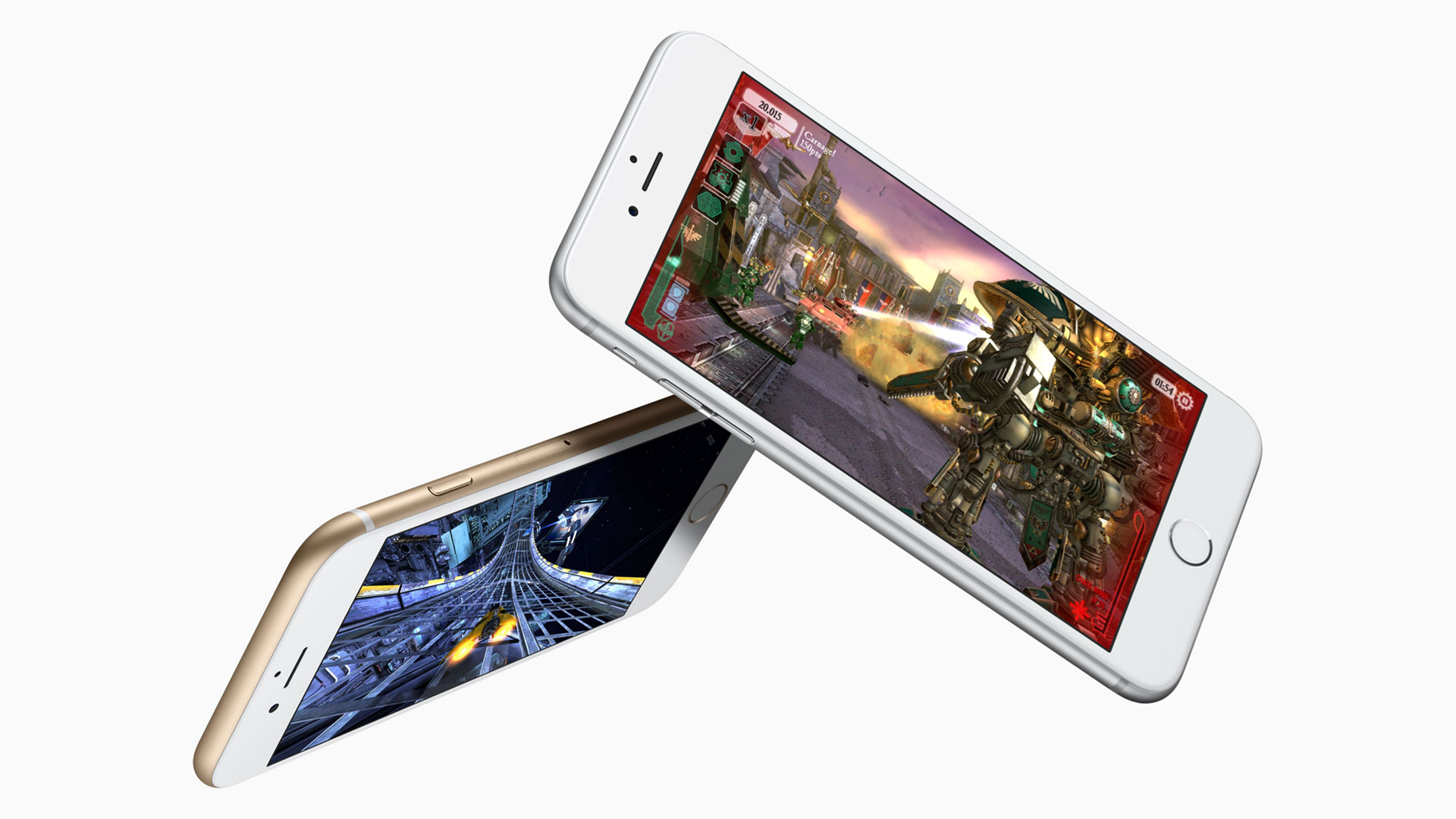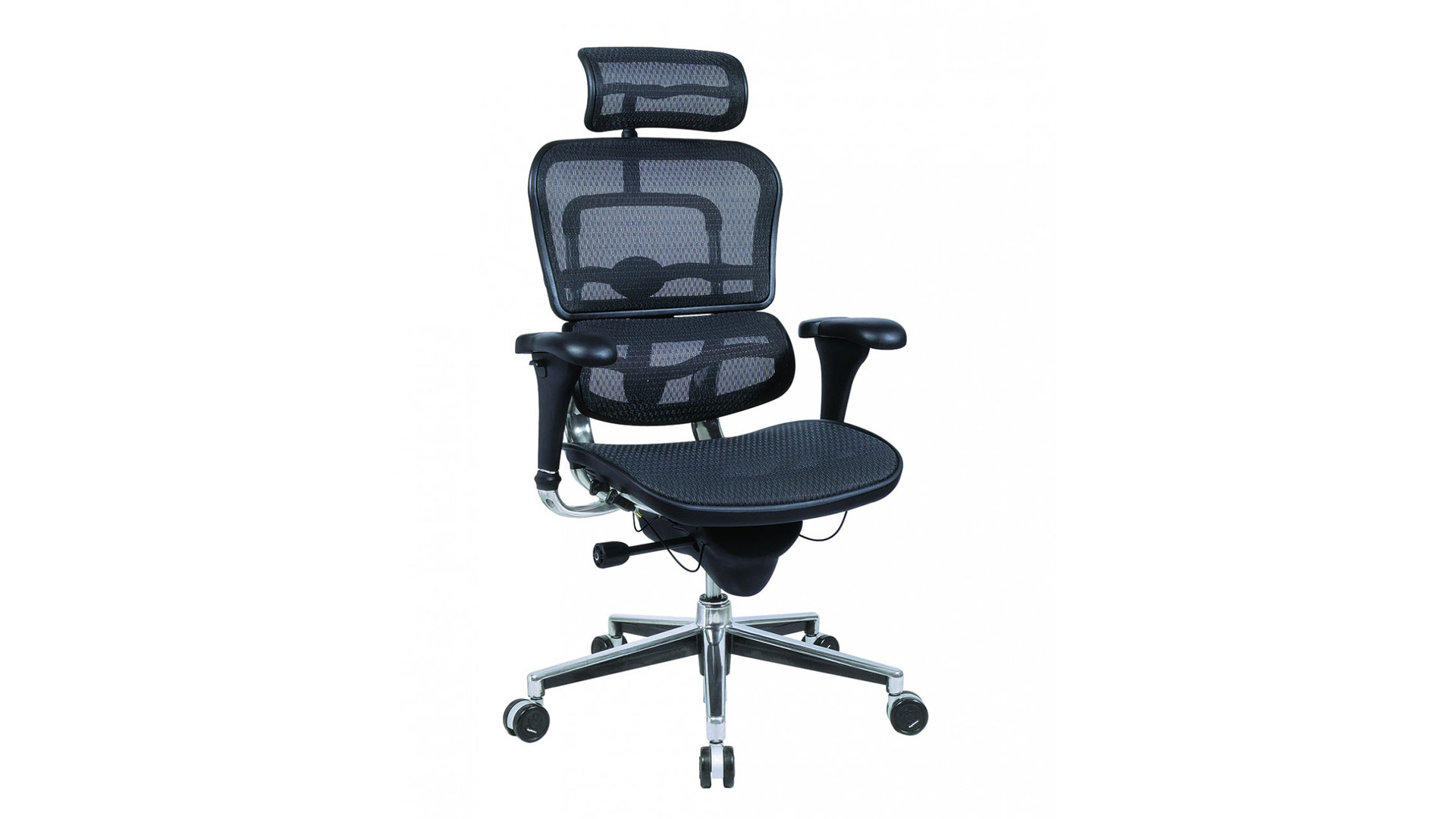Technolust: On the Road Again or Homeward Bound

Working from home and away
Getting things done efficiently and effectively is part of our everyday lives. If there's a product out there that can help you get your work done faster, that means more free time to do the things you enjoy. It's also important to be comfortable, and having used a lot of different products over the years, I know what I like and what I don't. I also know what I'll use and what will gather dust, so while it would be really cool to have a sweet drone or an awesome home stereo, they're not particularly high on my priority list.
So what upgrades would I like to have right now? I can think of many, but at the top of my list are three things: a new smartphone, a new laptop, and a new chair—not necessarily in that order.

My Dream Smartphone (for now)
This might seem like a fanboy pick, but let me start out by saying that I only use one Apple product right now, and it's not something I purchased: It's my iPhone 5S 16GB. Prior to coming to Maximum PC, I used an Android phone, a Nexus 5 to be precise. I liked that phone a lot, but then I dropped it and shattered the screen (and repaired it, though it was never quite the same afterward). When I found out that my new job would provide me with a free phone, but it had to be an iPhone… well, I figured I would try switching and see how it goes.
First the bad: I miss the back button of Android, and I despise iTunes. Over the past year, I've learned to live with the iOS interface and have found it to be responsive and generally easy to use—the switch from Android wasn't all that bad. I've also found that the GPS works a lot better than on my old Nexus 5. But iTunes… oh, how I love to hate you. On Windows, it feels like it was intentionally developed as a way to try and convince people that Macs are superior. Why do I need to install iTunes just to use USB tethering? Or transfer images from my phone to my PC? It's a clunky piece of software and something I do my best to avoid using. But the phone, well, the phone is still great.
Design is where Apple really excels, and compared to most of the Android phones I've used and handled, iPhones simply have a fit and finish that's unmatched. I do think the 5/5S looks nicer in many ways than the latest offerings, and thinner isn't always better, but I do have a few gripes with the 5S. For example, turning on Bluetooth sucks my battery dry, the display is a rather smallish four inches, not to mention the 1136x640 resolution. Having come from a 5-inch 1920x1080 Nexus, I want something a bit larger than the 5S display, but not as big as the iPhone 6S Plus 5.5-inch display. The iPhone 6S is the near-perfect compromise in my book.
I don't know if the Bluetooth battery issue has been fixed with the latest model, and I can live without Bluetooth most of the time. It's really about moving to that 4.7-inch display, although for a company that coined the "retina display" category, I'm a bit surprised the resolution is still only 1334x750. Apple is also really good about delivering accurate colors on their displays, however, so given the choice between their lower resolution and other companies' offerings, the iPhone generally wins.
What's really surprising to me is how far Apple is pushing the performance metrics with their latest SoC. My old Snapdragon 800 in the Nexus 5 wasn't particularly sluggish, and the move to the 5S was more lateral than forward. But since the A7 in the 5S launched more than two years ago, Apple has come out with the A8 and now the A9 processor. As one of the first 14nm/16nm FinFET parts—yes, if you hadn't heard, Apple sourced the A9 from both TSMC and Samsung, which is frankly a crazy thing only Apple would do—the A9 is at the cutting edge of technology.
The biggest gaming news, reviews and hardware deals
Keep up to date with the most important stories and the best deals, as picked by the PC Gamer team.
In practical terms, the iPhone 6S is roughly twice as fast as my current 5S, with graphics performance often two to three times faster. Oh, and Apple also delivers NAND performance that's hard to beat. What's really impressive is that Apple delivers all of this with just two of their Twister cores. Why use eight run-of-the-mill ARM cores when you can custom design your own processors that are apparently superior in every way? That doesn't mean Apple's A9 wins every performance metric, but when we struggle to use more than two cores on many desktop PCs, it's not surprising that the benefits of an octal-core smartphone SoC are more for marketing than the real world.
So far so good, but there's one area where I'm really techolusting after something more than my current phone: storage capacity. I got my phone for free, but I also got the base model 5S with a paltry 16GB of NAND. It's enough for minor use, but if I start snapping photos and recording videos, not to mention storing music for listening, 16GB gets gobbled up in no time at all. And of course, Apple has no intent to let you add your own micro-SD card, meaning you get what you buy and you live with it. For that reason, I'd normally go for the 64GB model, but in my dreams I'd go whole hog and nab the 128GB version—because why not?
What does the iPhone 6S get me?
In a word: more. More of everything. More performance, more screen, more resolution, more battery life, and more storage. There are few upgrades where you actually win in every single area, but this is one of them. The only compromise is in the money you have to spend. Depending on the color, an unlocked 64GB iPhone 6S runs around $800 while the 128GB 6S costs $890–$945. Buying a phone via a carrier can help bring down the price, but only about $50, so I'd rather just pay the extra for a fully unlocked phone. The biggest drawback? We all know we're only eight months away from the iPhone 7 launch.

A Well-Balanced Laptop
I've had the opportunity to play with some of the fastest notebooks on the planet for much of the past decade. They're awesome, and I love seeing things like the new GTX 980 for notebooks stuffed into MSI's GT72S. But when it comes time for me to actually get a new laptop for business and pleasure, I'm looking for something a bit more portable—there's nothing worse than lugging around a 15-pound backpack during a trade show! Enter Dell's latest revision of their XPS 15.
It's come a long way since the earliest models, and the XPS brand is now basically Dell's take on a MacBook Pro Retina. In many ways, they even manage to beat Apple, which is saying something—plus, again, I'm not really an Apple devotee; I'll stick with my Windows OS, thank-you-very-much. The new Skylake edition packs a Core i7-6700HQ processor, which is plenty fast for my laptop requirements. There are many different configurations available, but the one I really want is the fully loaded XPS 15 Touch. $2,650 is a serious investment, but this is basically a go-everywhere, do-everything option.
Joining the Core i7 processor is a not-insignificant GTX 960M graphics card. Granted, this is Maxwell 1.0 (GM107), which is a bit of a letdown, but it should still handle all games at medium to high settings running at 1080p. Besides, I've got my gaming desktop at home when I need it, so this is just something to let me game a little on the road. Optimus means I can still get good battery life, so there's no compromise there, and the top models are packing PCIe-based SSDs. In this case, you can get a full 1TB SSD, with no slow hard drive taking up space, allowing Dell to use a large 84Wh Li-polymer battery. Dell claims up to 17 hours of battery life, but they're probably running at minimum LCD brightness to get there; in practice, I expect 6–7 hours is more likely, and that's enough for me.
The screen is probably the real selling point for me—and I'm not just talking about the 3840x2160 touchscreen aspect. In truth, I don't need that high of a resolution, but it still looks great. What I really love is the "InfinityEdge" design, where the screen bezel is super narrow, at least on the top and sides. Dell would get even more bonus points if they would use a different aspect ratio (16:10 or even 3:2 would be awesome), but that ship has mostly sailed so I'll live with a 16:9 panel. The InfinityEdge does force the webcam down to the lower bezel, which can be a bit odd, but my webcam use is pretty limited so again, not a problem for me.
What does Dell's XPS 15 get me?
Much like the iPhone, this is a case of more being better. I have a laptop with a 512GB SSD, and it's generally sufficient, but it's not a PCIe-based drive and it's often running at 75 percent filled or more, forcing me to move files over to my desktop. It's not a huge problem, but a 1TB SSD would definitely be nice to have. I'd also like the move to a faster GTX 960M graphics chips for on-the-road gaming (my current laptop's GT 750M is proving woefully inadequate these days), and Skylake should provide a moderate but welcome improvement to both performance and battery life. The important thing is that I can get all of this in a laptop that still weighs under five pounds, and while there are times when I'd like an even smaller Ultrabook-class laptop, ultimately I'm not willing to give up the larger screen size and keyboard.

Sit Down and Relax
Last but not least, while the prior two items are great for when I'm away from home, most of my work time is spent at my desk. I've thought about standing desks, but for now I'm sticking with a traditional seated option, which means I need a good chair. I've gone through quite a few office chairs over the past couple of decades, and many of them have ended up in the dump after a few years. My current chair mostly works, but it's uncomfortable and lacks many of the adjustment options I really want.
One thing that I know now is that I really don't like leather chairs, particularly when I'm going to be sitting there 5–10 hours a day. They don't breathe well, which is a real problem in the summer, and they're usually firmer than I'd like. Ergohuman makes some great chairs, and their ME7ERG is a fully mesh design—exactly what I'm after. With a current price of $625, It's about three times the price of my current chair, but having suffered with this seat for most of the past two years, I now realize how important a comfortable chair can be.
The Ergohuman V1 has been around for a while, though it underwent a slight redesign in 2011. Unlike so many other accessories, chairs can last for decades if they're made right, and a good design won't become outdated. The ME7ERG can adjust the position of pretty much every element, ensuring good support whether you're sitting up straight or reclining. It's also a high-back model with a headrest, which is definitely a must-have feature in my book. The adjustable back gives you better lumbar support, and there's the usual tilt, sliding seat, and height adjustments. The single-lever control mechanism is also pretty slick, and the arm rests can move up and down as well as swiveling in and out.
What can Ergohuman give me that I’m currently missing?
Somehow or another, I ended up with one of the least comfortable office chairs I've ever used, and I've been stuck with it for a couple of years. It looked nice when I saw it in pictures, but besides being leather it has a serious problem: It can't properly support my 6'3" 220 pound size. And by that, I mean the height adjustment keeps sliding down. I tried locking the hydraulics in place with a pipe clamp, but the clamp still slides, and that takes away the height adjustment feature. Even at its best, however, this chair was merely serviceable rather than something comfortable that I want to keep using. The Ergohuman is a far better design, with a lifetime warranty, so even if something does go wrong, the company will fix it. And then I can let my children use my current chair and leave mine alone (fat chance of that happening).
Jarred's love of computers dates back to the dark ages when his dad brought home a DOS 2.3 PC and he left his C-64 behind. He eventually built his first custom PC in 1990 with a 286 12MHz, only to discover it was already woefully outdated when Wing Commander was released a few months later. He holds a BS in Computer Science from Brigham Young University and has been working as a tech journalist since 2004, writing for AnandTech, Maximum PC, and PC Gamer. From the first S3 Virge '3D decelerators' to today's GPUs, Jarred keeps up with all the latest graphics trends and is the one to ask about game performance.


